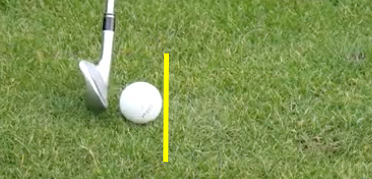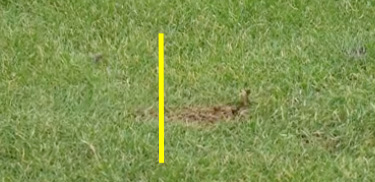Everybody knows you should hit the ball first, and the ground second. Well, if you didn’t know that, you do now.
That means the bottom of your golf swing arc must be in front of the ball, not underneath it, and definitely not behind it (that’s called hitting fat).
These pictures show what that means.

|

|
Here’s an easy drill to learn how to do that. You need to be on a mat, without a ball.
Lay a tee on the mat out of the way of the club path, and pointing to where the bottom of the ball would be. Look at the spot ahead of the tee and aim for hitting the ground with the sole of the club on that spot with your swing.
If you didn’t hit the spot, figure out what correction to make. Once you start hitting the spot, repeat the drill over and over. This is the swing that hits those rockets that make you wonder, How did I do that? Now you know.
You need to do this on a mat for two reasons. You can brush grass tops and think you hit forward of the ball when you really didn’t, but more because when you do this on a mat, you can feel and hear where the club hit the ball and the ground.
The feel you are aiming for is of the club impacting the ball and the ground almost simultaneously. I know you have felt this before.
The sound you are aiming for is the click of the club against the ball and the thud of the club against the ground happening almost simultaneously. I know you have heard this before.


